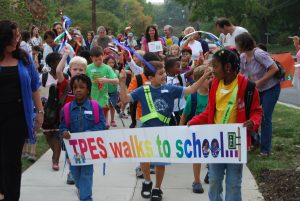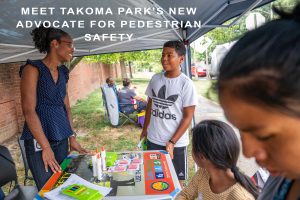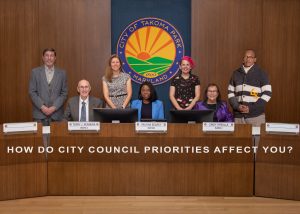by Kaysi-Ann Webley
Safe Routes to School Coordinator
October is here, and it’s time to lace up those sneakers, breathe in the crisp autumn air, and embrace the countless benefits of walking. As the leaves change and the weather cools, our charming city offers a perfect backdrop for exploring on foot. But it’s not just about leisurely strolls; it’s about community, education, and healthy habits.
This Walktober, we’re highlighting the importance of walking to school and encouraging you to participate in Walk to School Day, Walking Wednesdays, and even form walking school buses with other parents and students. Let’s step into this exciting journey together!
Walk to School Day
Walk to School Day, celebrated on October 4 this year, is the perfect way to kickstart Walktober. This international event encourages students, parents, and community members to ditch the car and choose the healthy and eco-friendly option of walking to school. It’s not just about getting exercise; it’s also about promoting safety, reducing traffic congestion, and fostering a sense of community.
Here’s how you can participate:
1. Plan your route: Choose a safe and scenic route to school that adheres to traffic rules.
2. Join or organize a group: Walking with friends and neighbors makes the journey more enjoyable. Consider forming a walking school bus, a group of students and parents who walk to school together.
3. Dress comfortably: Wear weather appropriate clothing and comfortable shoes to make the walk enjoyable.
4. Capture the moment: Take photos of your Walk to School Day experience and share them on social media using the hashtag #WalkToSchoolDayTakomaPark.
Walking Wednesdays
But why stop at just one day of walking? Why not designate every Wednesday in October as Walking Wednesdays? It’s a simple way to build a healthy habit and explore your neighborhood on foot. Whether it’s a leisurely stroll or a brisk walk, Walking Wednesdays provide an opportunity to connect with your surroundings, discover hidden gems, and reduce your carbon footprint.
Take the Walking School Bus!
Imagine a safer, more eco-friendly, and community-driven way for children to get to school. That’s where the concept of a walking school bus comes in. This innovative approach to school transportation not only benefits the environment but also builds a sense of camaraderie among students and parents.
A walking school bus is a group of students who walk to school together, accompanied by one or more responsible adults. The bus doesn’t involve any vehicles but instead relies on the power of foot traffic. It promotes a sense of community, ensures children’s safety, nd encourages healthy habits—all while reducing the number of cars on the road.
The Benefits of a Walking School Bus
• Safety: With adult supervision, children can navigate busy streets and intersections more safely, reducing the risk of accidents.
• Physical activity: Walking to school promotes physical activity, contributing to children’s overall health and wellbeing.
• Environmental impact: Fewer cars on the road mean reduced traffic congestion and lower carbon emissions, making a positive impact on the environment.
• Community-building: Walking school buses bring parents, students, and neighbors together.
Quick Tips for Organizing a Walking School Bus
1. Gather interested parents: Start by reaching out to parents in your neighborhood or school community who are interested in participating.
2. Identify routes: Determine the safest routes to school, considering factors like pedestrian-friendly pathways, crosswalks, and traffic lights. See the Safe Routes to School page on the City website.
3. Set up a schedule: Establish a consistent schedule for the Walking School Bus, including pick-up times and locations.
4. Assign responsibilities: Divide responsibilities among parents, such as lead walkers, crossing guards, and communication coordinators.
5. Communicate: Ensure that all parents and students involved have a reliable way to communicate, such as a group chat or email list.
6. Be safe: Emphasize safety rules and practices to parents and students. Teach them how to use crosswalks, look both ways before crossing, and follow traffic signals.
7. Start small: Begin with a manageable group of students and parents. As the program gains momentum, you can expand. The Centers for Disease Control and Prevention recommend one adult for every six children. If children are age 10 or older, fewer adults may be needed. If children are ages 4 to 6, one adult per three children is recommended.
8. Promote it: Spread the word within your school and community about the Walking School Bus. Use flyers, social media, and school newsletters to create awareness. Share your school bus with your local Safe Routes to School Coordinator Kaysi-Ann Webley at kaysiw@takomaparkmd.gov.
9. Celebrate success: Recognize the achievements of your Walking School Bus, whether it’s reaching milestones, promoting safety, or building a stronger community.
Organizing a Walking School Bus is an effective and rewarding way to promote safety, health, and community spirit within your neighborhood. It’s a practical solution to reduce traffic congestion and minimize your carbon footprint while giving your children a healthier and more enjoyable way to get to school. So, put on those walking shoes and start your journey towards a safer, greener, and more connected community today!
Check out the full October Newsletter on the Takoma Park Newsletter webpage.






